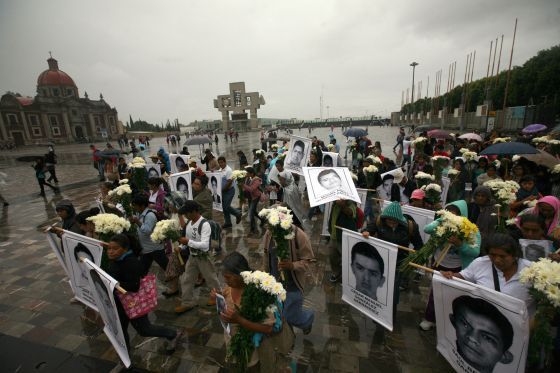
The lack of response by the Mexican government on the issue of missing people in the country has pushed many of the victims' families into becoming genuine experts on research and forensic science so much so that they are now operating a genetic bank without government intervention.
Involved in the project are researchers Ernesto Schwartz and Arely Cruz, as well as family members such as Julia Alonso, whose son went missing in New Leon state in 2008.
"Unfortunately, we have become experts, but not because we wanted but due to the misfortune of having a government like the one we have," Alonso told reporters at a press briefing Thursday.
It was held to announce the positive identification of Brenda Damaris Gonzalez, the first body to be identified through the project which has funding from Durham University in Britain.
Without a genetic test to prove it, Juana Solis, the mother of the young girl who went missing in 2011 also in New Leon, would not have believed that the bag of remains handed to her was her daughter.
Which is why she turned to the Civil Governance Forensic (GFC) team and her case became the seed for the citizens' project along with the knowledge acquired by the two researchers during their work in Colombia.
In fact, it was in that country that they came up with the idea of a model of civic participation in the field of forensic sciences.
Until now, the project has received funding of $386,000 from the British university to perform independent DNA tests for the families of the missing as well as to set up a genetic bank.
Rodolfo Franco, one of the GFC founders, told Spanish news agency Efe that one of the main objectives of the project was so that "the government sees that citizens can be organised to participate in forensic matters" and got motivated to extend their cooperation.
The project has three steps. The first is "to shape a citizen administration that will manage a database", that has already been fulfilled thanks to a group of victims, all public figures known for fighting for the cases of the missing.
Among them is Tita Radilla, the daughter of Rosendo Radilla who disappeared in 1974 after being arrested by the Mexican army, a case for which Mexico was found guilty by the Inter-American Court of Human Rights.
According to Radilla, it is clear that "there is no response, no clarification of facts" by the government and there are "bodies that are buried when there are hundreds of families searching for their families, and, even then, those human remains are put in mass graves without identifying them".
The second step of the project, which is still under way, is the collection of data of the families of the people who have disappeared. Until now, it has managed to gather data from more than 600 families, many of them from Iguala in the state of Guerrero.
On Sep 26 last year, 43 students went missing in that state. Since then, dozens of mass graves have been discovered with unidentified bodies, prompting the family members to question the disappearances and search for their loved ones through such initiatives.
The third step has yet to start, explained Franco, and will be the creation of a bio-bank with genetic samples from the families which could be matched with the information from bodies.
Currently, there is enough funding to conduct tests on more than 1,500 people, but the aim is to continue bumping up that number, given that the figure is still falls woefully short of the more than 27,000 people that remain missing in Mexico today, Franco said.
Friday 20 February 2015
http://www.newkerala.com/news/2015/fullnews-21876.html

0 comments:
Post a Comment